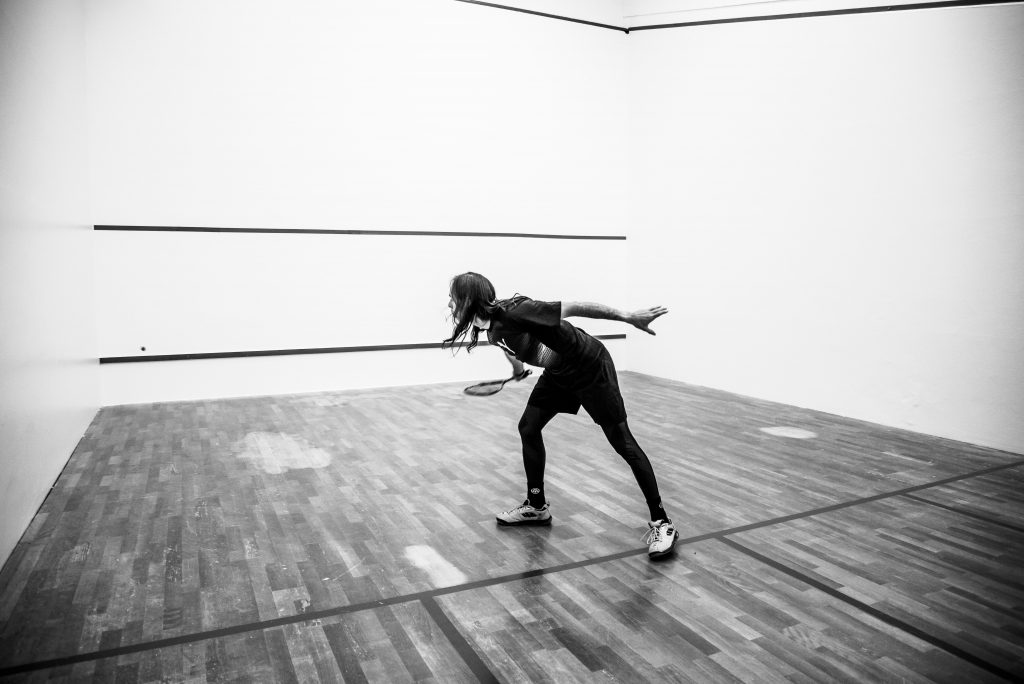Squash in Australia and New Zealand has dwindling participation numbers, poor-quality facilities and a general lack of direction when it comes to the future of the sport. With competing racket sports like Pickleball fine-tuning and rapidly developing their strategy to grow, squash as an institution has a lot of work on its hands. - Rod Bannister writes for Sportageous.

Having worked in the trenches for Squash Australia managing their High Performance (HP) Centre on the Gold Coast and recently taking up a contract role for SquashGym Palmerston North in New Zealand as their Funding & commercial Coordinator, I’ve had the opportunity to get an up-close and personal look at our wonderful game of squash in the Australasian market.
These two centres are arguably at the forefront of our sport in this part of the world, with the HP Centre being a base for HP squash in Australia, hosting multiple PSA events including the world doubles, major junior tournaments, the Australian National Championships, the Australian University Games and it was set to host the 2020 World Junior Men’s Champs where I was to head up the venue side of the event until the pandemic hit the world!
SquashGym itself is a benchmark facility in its own right based on the West Coast of the North Island in New Zealand, hosting the 2006 World Junior Men’s Champs, the 2010 World Teams Women’s Championships and several, up to $10,000 events.
READ: Promoting the game, its future & squash in Australia with Geoff Hunt
These experiences have given me the opportunity to observe, have discussions and break down the great and not-so-great stuff of where our sport lies in the competitive landscape of sport and recreation or in a wider spectre; considering people’s free time is becoming an absolute premium.
What has gone wrong with the game of squash in this region?
Some consistent themes in our sport across both countries are becoming apparent: if you were a first time user, most of our facilities - centres are not that easy to find, they are not easy to get into once you have discovered them i.e. the front doors are closed and there is potentially no one on-site.
Many people who are not squash players drive past the facilities without any knowledge that they exist, the game is perceived as being an elitist sport and being a different form of the likes of tennis. It is also inside older dwellings, which are often poorly lit and rather dingy and cold. Meanwhile, the standalone facilities are outdated and in regular need of ongoing maintenance work - which, sometimes is unaffordable and not viable for centre owners.
A large majority of facilities are on prime real estate and are of more use to developers who knock them down to build commercial dwellings that give them a good return on investment. If these centres were hotels they would be broke, as courts within standalone squash facilities are empty, most of the time, with usage being very sparse and once people join a club their member experience is very poor, as they’re literally left to their own devices, unlike the first time users induction programs many commercial fitness centres undertake and the list goes on.
Squash can learn from the growing phenomenon of Pickleball
On the contrary, a sport like pickleball, yes that’s correct pickleball, has been growing exponentially over the past few years in the USA, a market that in most industries is followed by Australia and New Zealand in terms of industry trends, it just takes time.
Recently, Pickleball has joined up with a major commercial food chain and formed Chicken N Pickle (google it), to form new age modern facilities that are ticking many boxes that our sport does not. Pickleball is one of the fastest-growing sports in the USA, that too, in places literally running over squash, and in places that squash has had years to establish itself prior to the existence of pickleball and it taking a new direction and forming new partnerships.
Unfortunately, our sport is run by a group of bureaucratic self-indulged egomaniacs who have, until now, turned a blind eye to evolving our game or thinking big.
I’ve experienced Pickleball first hand in my hometown Whanganui in New Zealand. I was intrigued by all the fuss and I was pleasantly surprised that in fact there was a weekly social gathering so I gave it a go. The organisers were very easy to contact, very inviting upon my arrival, they gave me a quick overview and away I went.
It’s a very easy game to pick up and the venue was well lit. It cost me a $5 investment, there was a wide mixture of female and male attendees plus various age groups and most importantly, there was no pressure to join the club.
I was welcomed back, it was very social with a lot of laughter, you could play singles or doubles matched up, versus very similar levels, the organisers were very enthusiastic and approachable, they followed me up after my first visit and invited me back. There was no pressure to play competition or events, I could pick and choose if I did or did not want to come back.
After the first visit, it was so addictive that I went online and purchased my first padel for approximately US$120! Pickleball is very cost-effective and easy to set up as a club as compared to our large land and building dwellings.
It has also hit the right buttons with engaging their local communities particularly through focusing on the social aspect of the sport, first providing it with the opportunity to grow the participation side of the game and not focus on the competitive side of the sport as a major priority, which for me is a major reason our sport has some of its challenges.
There is a groundswell in various parts of the world, from squashies who have a vested interest in the sport at the highest level, who understand that if we do not develop new models to appeal to a wider audience our sport in the very near future will at the very least, dwindle, if not be a non-entity altogether, compared to other racket sports that are swiftly changing direction to appeal to the rigours of modern society.

Squash needs to hit the reset button
Unfortunately, our sport is run by a group of bureaucratic self-indulged egomaniacs who have, until now, turned a blind eye to thinking big or evolving our game. You would think that missing out on the Olympics to other codes that do not have our history but are modern and adaptable, would have been some sort of message that potentially we need to embrace change.
READ: How to get your Squash fix during the Coronavirus disease (COVID-19) Pandemic
But, oh no, let’s continue to complain and moan producing the same models on the ground, over and over. Trust me the Federations and Associations, let alone knowing the answers, do not know what questions to ask to bring our game up to the contemporary specifications.
Ask yourself, what’s appealing about facilities that are:
- Hidden,
- Only build memberships from within people that have played the game before,
- Attract crowds that are predominantly squash people,
- Have a closed-door policy,
- Are dark and uninviting when you get to enter them,
- Are not that user friendly or welcoming,
- Rely on the volunteers who are already at capacity in their lives,
- Are not very social or inviting at first experience,
- Have a lot of grumpy old men stuck in their ways or drinking at the same spot at the club bar year after year,
- Are not very attractive to the female patron particularly the changing rooms,
- Have a very poor first contact new member experience based on the ‘you’ll be alright - good luck!’ philosophy?
I can keep going with the negatives!
Squash seriously needs to:
- Develop outdoor facilities (consider modified versions with retractable roofs) in high visibility areas,
- Engage our local communities,
- Become easy to join and easy to access
- Become cost-effective and very social,
- Reduce red tape from within,
- Focus less on the competition aspect of the sport and
- Focus more on the participation aspect,
- Form strong partnerships with other industries such as food chains or other major cross-pollinated, forward-thinking industry sectors,
- Be modern crisp, clean, engaging and well-lit,
- Research cost effective builds in partnership with other codes and industries,
- Be IT-driven and focused,
- Provide engaging and massive growth scopes across all social platforms, and;
- In a nutshell, at the local community level, squash needs to be current and move with the times.
It’s not all doom and gloom, as there are wheels in motion, within groups of people, throughout the world, looking at new models.
One thing they do collectively understand that in the first instance this progress will not be driven or forthcoming in the near future through our bureaucratic, red-taped Federations or Governing Bodies, and instead the movement will be in the hands of committed and visionary commercially-savvy business people that have a love, affinity, vested interest and passion for our game to thrive!

